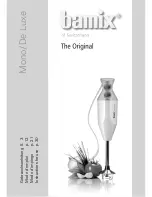
contacts which connect together the track announce control bus lines. These lines
are linked to the studio playback cassette where their connection operates an active
control relay RL1, which in turn quiets the control room loudspeakers. The track
announce signal bus line also originates in the Studio Playback Cassette and, when
the oscillator key is in its central position, receives the amplified output from the
operator’s microphone through a pre-set level control.
5.2.8 Track Announce – Multi
When the multi-track announce button in the Studio Playback Cassette is
operated, it operates RL1 to quiet the control room loudspeakers and applies a
voltage to pin3 of the track announce relay RL5 in each main cassette. Each relay
RL5 provides two control signals to each of the switching control Amplifiers N, the
circuit of which is described in 12.14.
The application of these control signals causes the switching amplifier to
perform the same function as the changeover contacts on the individual track
announce push-button. The Amplifier N has unity voltage gain.
5.2.9 Output Amplifiers
The output amplifiers and output transformer are identical with those used in
the Group cassette for the echo outputs (see 4.3.2). Since it is common practice to
run two tape machines in parallel, two 5-pin Tuchel output sockets wired in parallel
are provided.
5.3
Cue Circuits
In order to allow signal from any Main Channel to fed to the cue circuits, a
connection is taken from the output of the Amplifier N and fed through an isolating
Amplifier G to a cue selector switch, as used in the Microphone Cassettes. Instead
of the common level control used in the Microphone Cassette, the Main Cassette
provides a separate level control for each cue channel. These feed through
Amplifiers B to the cue bus lines.
5.4
Auxiliary Stereo
When a multi-track master is being made, it may be desired also to have a
twin track stereo tape which can be replayed on a normal type machine, without the
mixing facilities required for the multi-track version.
5.4.1 Auxiliary Stereo Channel
A tapping is taken from the output of the input Amplifier C1 in each channel
to feed the following chain:
a.
Band Pass Filter (B14 or B28).
b.
Coupling Capacitor (C1 or C3).
c.
Level Control (General-purpose attenuator).
d.
Amplifier G (unity gain).
e.
Pan Pot.
f.
Pair of Amplifiers B.
g.
Auxiliary Stereo bus lines, Left and Right.
















































